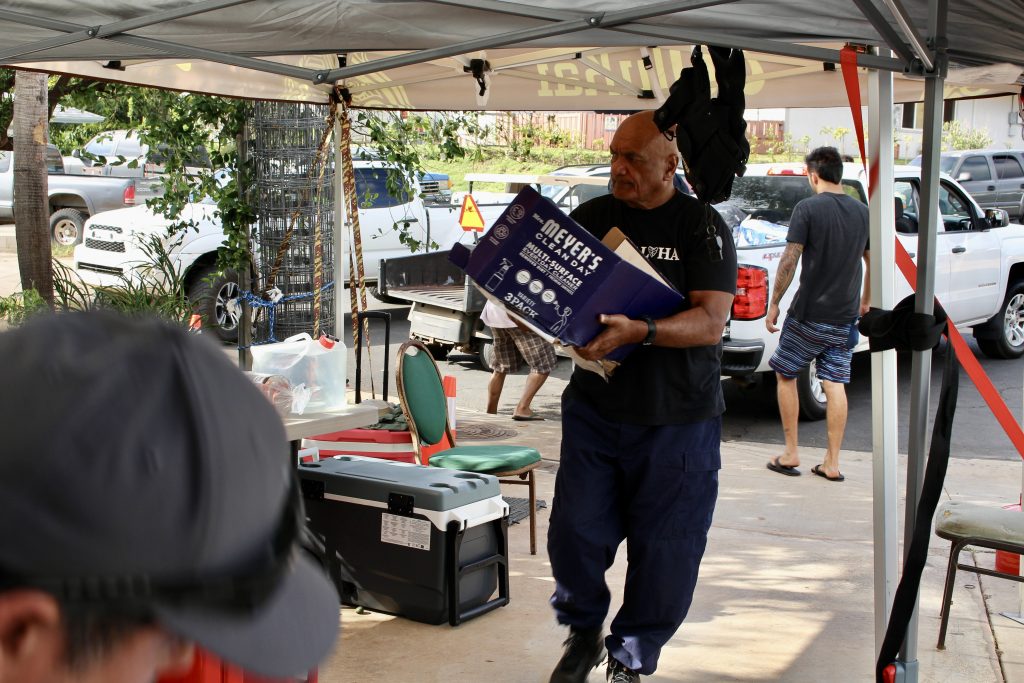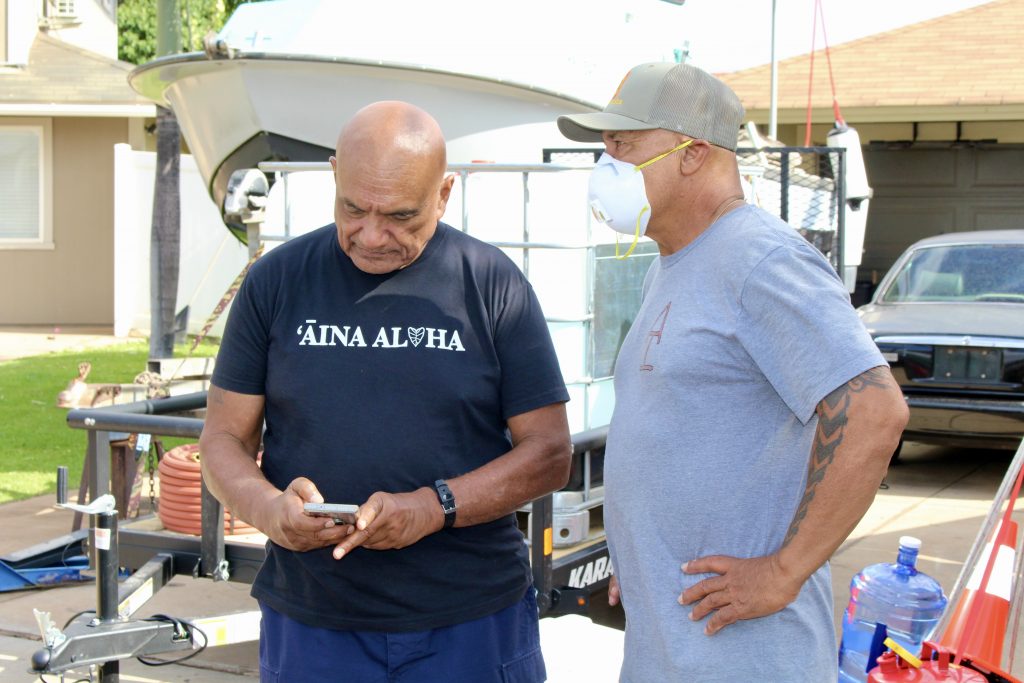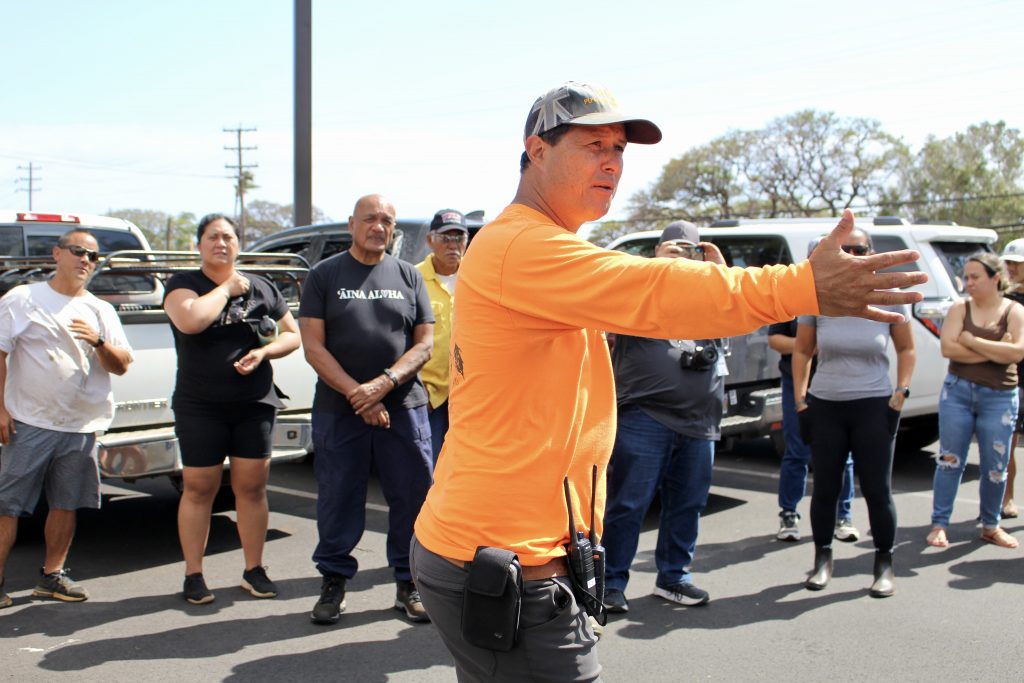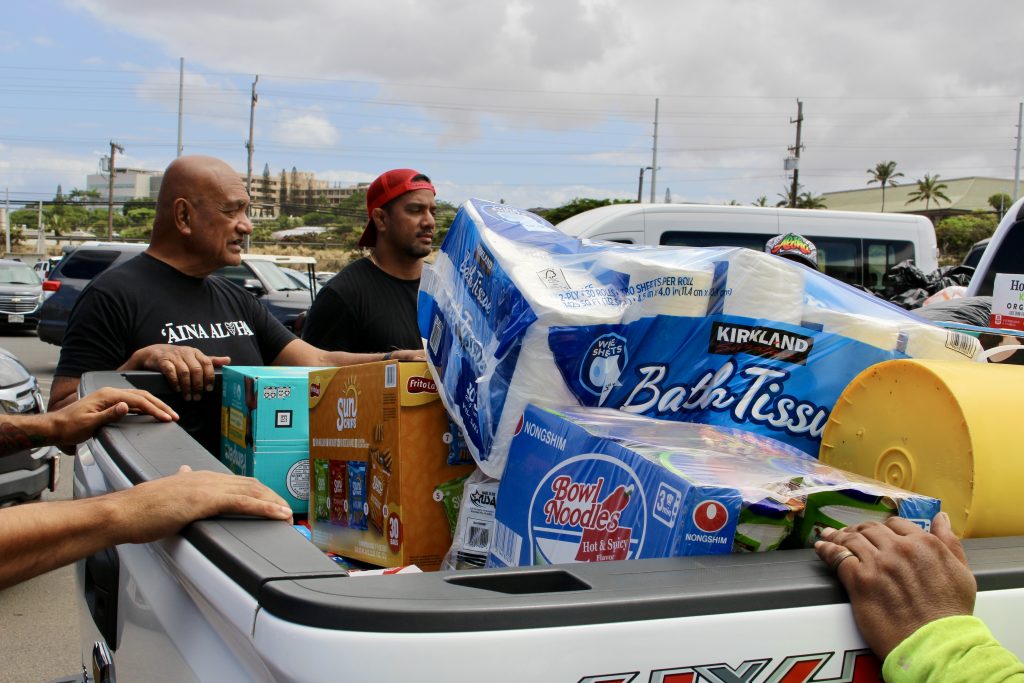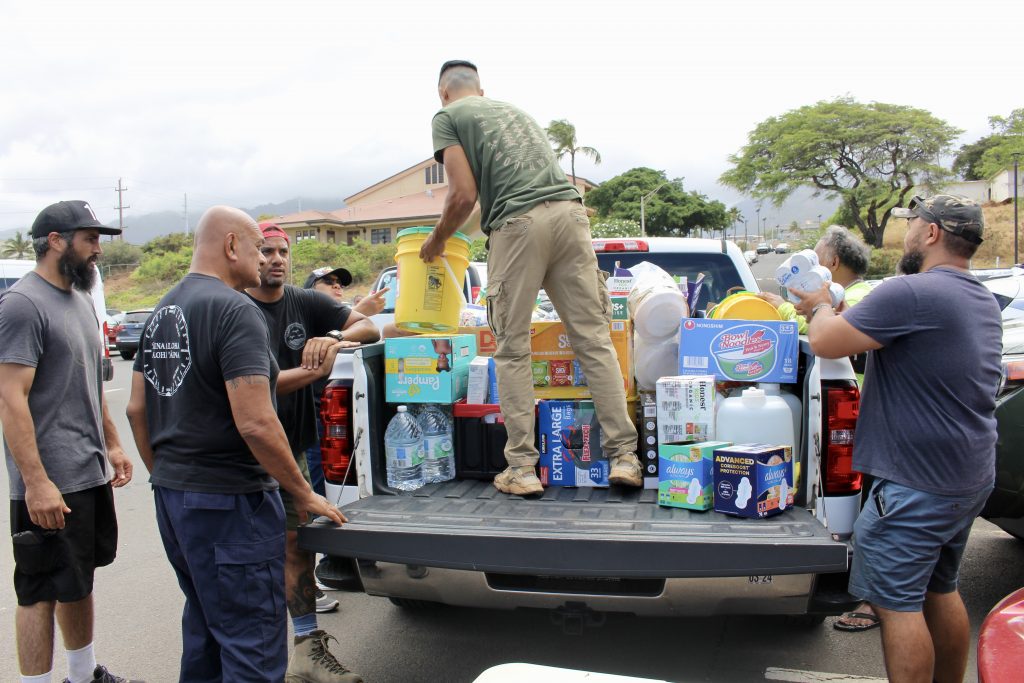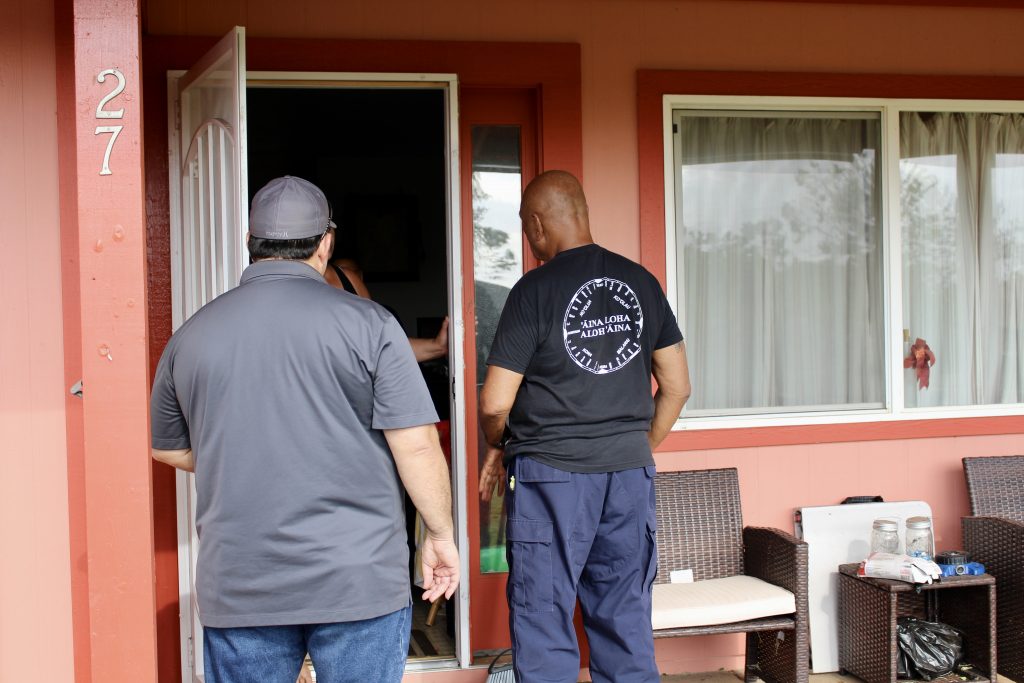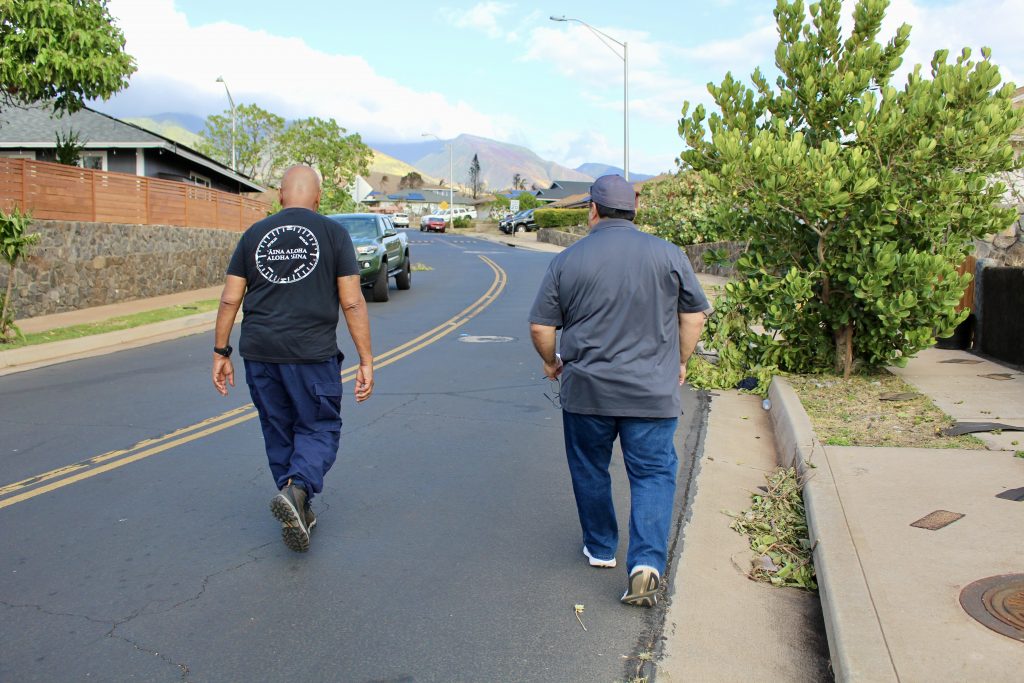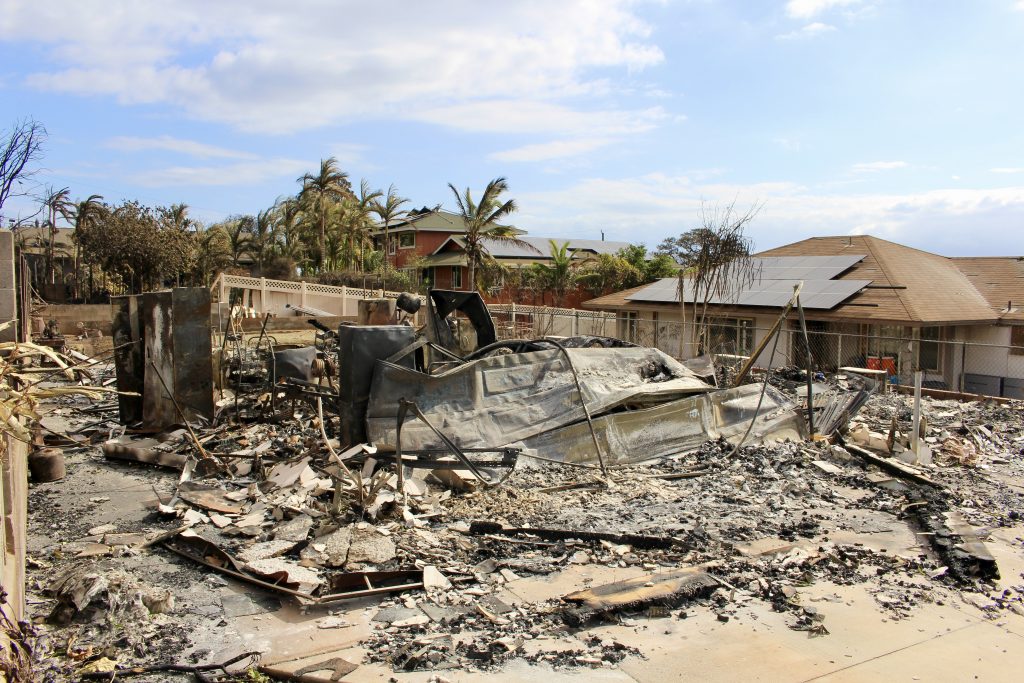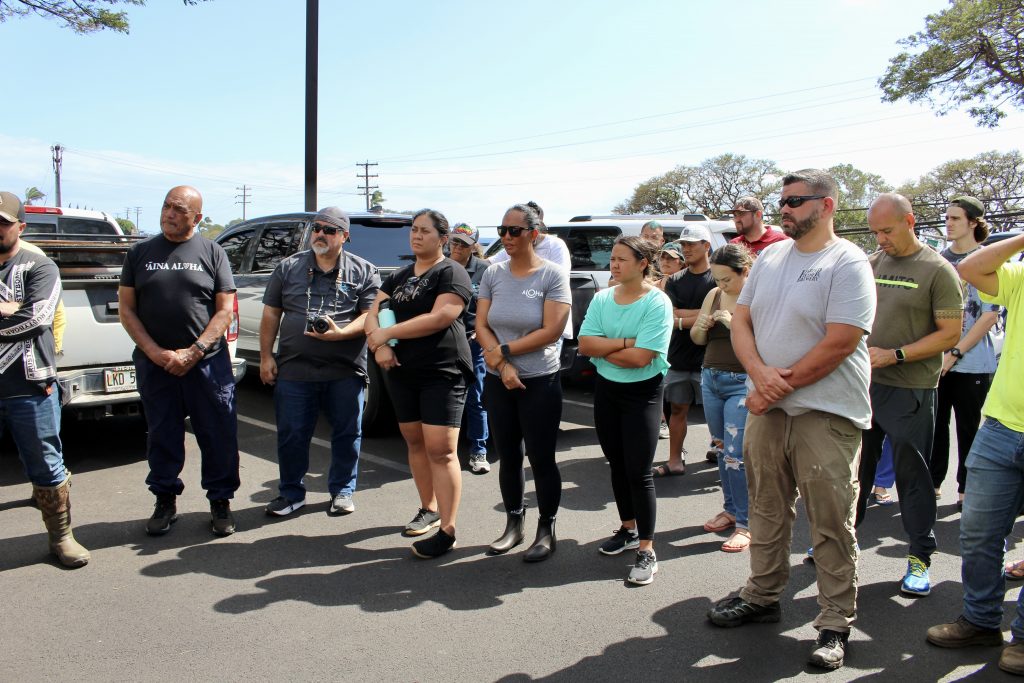Dept. of Hawaiian Homelands organizes supply drop for Villages of Leialiʻi homestead
Wildfire updates for Monday Aug. 15 are posted: HERE.
The Department of Hawaiian Home Lands organized the delivery of essential goods to the homesteaders of Villages of Leialiʻi, one of the communities impacted by the devastating wildfires on the island of Maui.
The devastating Lahaina wildfire consumed two homes at the Villages of Leialiʻi homestead, which consists of 104 residential lots. They were among the 2,207 structures damaged or destroyed in the Lahaina wildfire.
Portable toilets, generators, extension cords and a roll-off were delivered Saturday.
“After the fire, DHHL immediately began assessing the extent of the damage on Hawaiian Home Lands,” said Hawaiian Homes Commission Chair Kali Watson in a news release update. “This was crucial to understand the immediate needs of beneficiaries and to plan for long-term recovery.”
In partnership with local and community leaders, Hawaiian Homes Maui Commissioner Randy Awo lead a team of DHHL staff through the Villages of Leialiʻi Thursday. While on the ground the team went door-to-door to check on beneficiaries, survey their needs, distribute supplies, and assess damage to homes.
“We are here to stand with our people in this time of devastation,” said Commissioner Awo. “We are here to acknowledge the challenges that are in front of us and our commitment to be ‘onipaʻa, as we move forward in resilience and resurrection.”
DHHL is committed to meeting the needs of our community and will work alongside federal, state and county leaders to ensure beneficiaries are safe, sheltered and have access to necessities. The Department has allocated resources and funds to support recovery efforts. This requires both immediate crisis management funding and longer-term planning to ensure sustainable recovery.
“In the aftermath of the wildfires, DHHL is involved in rebuilding homes and infrastructure,” Chair Watson said. “This entails not just restoring what was lost, but also considering how to build in a way that would be more resilient to future fires and storms.”





